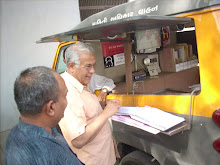Tehelka: New Delhi: Wednesday, August 02, 2017.
Shedding
judiciary’s reluctance to come within the ambit of the Right to Information Act
by agreeing to extend the Right To Information Act to the office of the Chief
Justice of India and Governors should be welcomed. While it would raise the bar
for transparency in the judiciary, it would also effectively check politicking
by Governors. This would mean that the political appointees would be under
pressure to recommend President’s rule in a state only when there are
reasonable grounds for it. The Governors would also have to apply due diligence
before taking major decisions. This is for the first time that a Bench of the
Supreme Court comprising Justices Arun Mishra and Amitava Roy has publicly
expressed an opinion in favour of it.
This
observation is a marked departure from the earlier stand of the apex court that
it is beyond the ambit of the transparency law. Indeed, the interest of
transparency will certainly be better served if all Constitutional
functionaries, including the Chief Justice of India and Governors, were to come
under the purview of Right to Information.
It is
significant that the issue whether the CJI must make public under RTI
information regarding the selection of judges and his/her correspondence with
the government has been taken up by the Constitution bench of the apex court,
and a decision is still pending. Already the Delhi High Court had ruled that
the CJI was indeed a public functionary and had asked the apex court to make
public the wealth of its judges.
The Central
Information Commission has also declared the CJI office as a public authority
in order to bring it under the RTI Act. The Court observation came on a bunch
of petitions challenging a Bombay High Court order declaring the governor’s
office as a public authority and directing the Goa Raj Bhavan to make public
the Governor’s report sent to the President on the political situation in the
state.
The then
leader of the opposition in the Goa assembly, Manohar Parrikar had sought the
information under RTI. Bringing the CJI under the Act would mean giving the
public access to reasons behind judicial appointments or rejections, why a
particular judge has been selected or ignored, who said what for or against a
judge’s elevation.
How is
judiciary opening up to scrutiny would be clear from the observations of the
Bench, “What is there to hide? There is nothing to hide for the Chief Justice
of India. There is no secretive business of the chief justice and the office of
CJI should be brought within RTI’s ambit. Why governor and CJI should not be
brought under RTI?”















































































